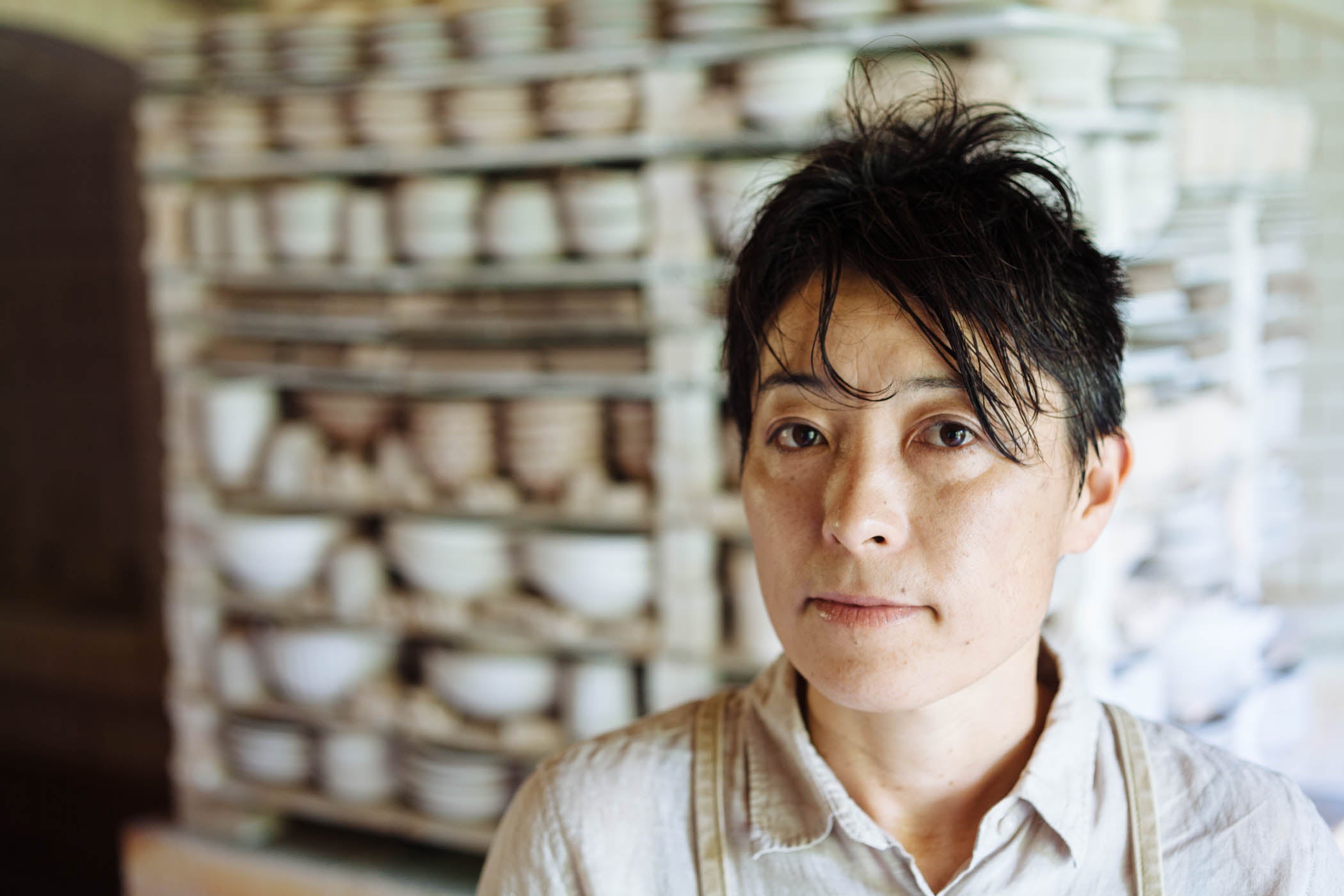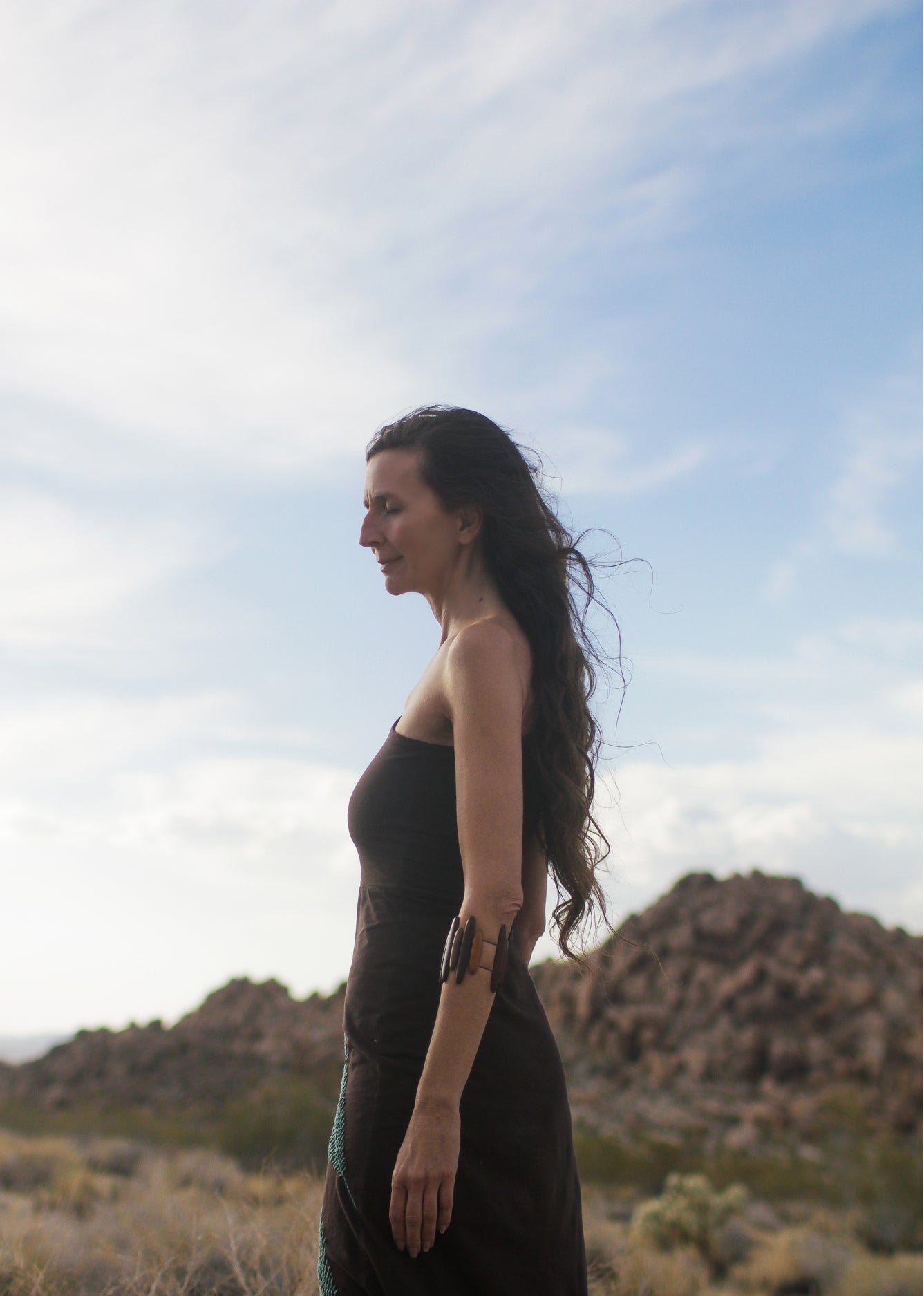The 8 Ball: Hanako Nakazato

HANAKO NAKAZATO: Splitting her time between Maine and Japan, Hanako makes pottery not for the sake of self expression, but instead for other people to use and enjoy artistically in their daily lives. Hanako speaks to us about her roots in Karatsu, Japan and what is inspiring her at the moment.
Talk to us about splitting your time between Maine and Japan. What do you love about both? How are they different?
My wife and I spend 4 months a year in Maine and 8 months in Japan each year. What we love about this lifestyle is that we get to spend the best seasons in each place. We both work at home so we cook and eat at home all the time. We feel very close to the seasonal changes and what nature offers us to eat in each season, which we love. Also culturally it is a great opportunity to observe the world we live in and to learn about ourselves by always seeing things from a different perspective. American culture encourages you to openly express yourself and your desires in life, while Japanese culture values quiet consideration and thoughtfulness. Understanding both cultures keeps us curious and open minded but at the same time it can lead to a certain loneliness and frustration too.

Tell us how Monohanako began.
I make pottery not for the sake of self expression in clay but to make something useful for other people to enjoy artistically in their daily lives. I have noticed there is a growing interest in food, and now people are considering not only what they eat, but also how they eat or how they live, which is what I am interested in too. I grew up in Karatsu, Japan, where I was surrounded by many family members successfully making pottery. When I was a teenager I was never interested in pottery or living in a small town so I left Karatsu and moved alone to the US, and ended up staying in the US through college. I learned to appreciate my native culture once I was away from it and discovered that Japan had a unique and beautiful food culture, and a great aesthetic in food presentation, where pottery played a big role.
After college, I returned to Karatsu to study pottery from my father, Takashi Nakazato, who taught me the basics of how to be an efficient skilled potter. After that, I moved to the States where the potter Malcolm Wright, in Vermont, generously opened the door for me to develop my own work at his studio for five years.
In 2007, I opened my own independent studio and business “monohanako” in Karatsu. The name contains the English meaning of mono, being unique or one-and-only which refers to the nature of something handmade. Also mono means thing in Japanese, and has a reference to pottery. I hope that by presenting my work in this way people will be creative and have fun with it, will use it freely. In this day and age people have different styles of living and dinning. I want my pottery to be versatile and function in different environments.
Can you explain how your technique and philosophy is rooted in the ceramic traditions of Karatsu, Japan for those who are not familiar with the city?
Karatsu is a historical town for pottery and was originally developed by Korean potters who were brought to Karatsu in the 16th century. Traditionally Karatsu pottery is glazed simply and fired in wood kilns. Pieces tend to be grey or beige and rustic looking - very simple and not heavily decorated. They don’t look perfect in the sense of symmetry and proportion but somehow you can feel human and naive and intimate because they are handmade.
There is a unique throwing technique in Karatsu. We work fast and throw many pieces off of a big mound of clay using a gyu-bera to stretch the clay. It requires specific skills and it’s a very efficient way of mass producing hand thrown pots.
Karatsu pottery is not meant to be decorative but for use as tableware or as tea utensils. There is a saying about Karatsu pottery, “maker 20, user 80,” meaning the maker is only 20% of creating a piece and it is mostly up to the user to complete the piece. Although my work might look very different from traditional Karatsu pottery in terms of style and aesthetic, that is my basic philosophy in approaching clay.
What are you influenced by at the moment?
Mindfulness and nature always, and perhaps music. Through my training at my father’s studio and over 20 years of being a full time studio potter, I have become very skilled and efficient on the wheel. These days I make 8000-10,000 pieces per year with my own hands. I am grateful that I have this skill. I feel free on the wheel and that’s when the best work comes out, when I’m not thinking about anything and just in the groove. For me, that’s total mindfulness. I love music and I think that appreciation shows up as musicality in my work. Also the sense of timing and being intuitive with physical movement is something I inherited from being an athlete when I was younger.
Nature is also a great teacher for me. Color or shape, insects or plants, whatever exists in nature is never intentionally expressive but always perfect, nothing less, nothing more, nothing the same. It’s always the best design. Plants never try to be different or beautiful but they are naturally different and beautiful, just as they are. The sky is never the same color but it is always gorgeously painted. Both of my parents taught me how to find beauty in the small things in life. I am realizing how much I appreciate those values in life, especially as I get older.


Do you have a favorite piece that you’ve created so far? If so, what is it and why?
I don’t want to be attached to any one piece in particular. Of course sometimes there is a “oh, hey!” moment, but I don’t want to stay there or to be too attached in that. Good work happens in the moment when there is a magical energy and the energy should always be moving. Clay and food are similar that way. I don’t want to put too much ego in my work either, from start to finish. Of course, I have ego, but because my pottery is meant to be used, I want to leave some room for food and for users to communicate with the pottery however they want. I want my pottery to have some healthy energy for the user to feel and enjoy, but it can’t be too loud. That is my definition of good work.
Since my pottery is meant for use, you never really know how great they are unless you use them. Also, what is great is subjective. Sometimes you want to feel excited or sometimes you might be looking for comfort. Pottery can be more than a utensil to put food on, it can be a tool to get in touch with your emotions or mood, just like how you would express your feelings with how you choose your outfit. After my work leaves my hands, I want the real joy of the creative process left for the user.
What does your process look like for preparing for an exhibition of your pottery? Are there any exhibitions that we can see right now?
I just had my annual exhibition at Sara Japanese Pottery in New York. This is the only place where both my work from Japan and Maine are presented in the same room, so it is interesting to see the juxtaposition.
In terms of presentation, every space is different and even the same pottery looks different in different spaces. Usually before I get into production I think about the space and try to come up with a color theme or feeling to fit in the given space. I want to create an interesting rhythm in the presentation, so I make sure I have some variety in shape, size, and height. But I don’t want to create something coming from the head too much so I also don’t want to overthink it. I want to work with the natural flow. So I start with a vague idea, such as color and nuance, and balance with some tension. I am not a storyteller. I try to create a platform with pottery so that the viewers get into the scenery and create their own stories, like “ I want to cook a warm fall vegetable dish listening to my favorite jazz album!” or “this blue reminds me of a summer night I spent in Maine. I think I will get some blueberries.”
In terms of physical preparation, I work counting backwards from the deadline, so my production schedule is always on time. That part can be stressful sometimes.
Your favorite thing to do in Maine? Your favorite thing to do in Japan?
Fortunately, both places offer great seasonal local food. I love fresh seafood and rice in Japan, and in Maine we enjoy fresh vegetables, like heirloom tomatoes, or fresh oysters, or artisanal cheese. In both places we have a community to enjoy cooking and eating together. In Japan, there are lots of different kinds of wild vegetables in spring, I enjoy foraging around our neighborhood. Our life in Japan tends to get much busier with work, so I get the high adrenaline there. But around the time we come back to Maine I am ready to relax. I still work in the studio in Maine, but somehow I feel like I have a more relaxing schedule. I enjoy having time to hike, swim, play music, and hang out with friends.
What’s next for Monohanako?
I have exhibitions lined up as soon as I get back to Japan, so I have to jump into full production mode. I am very grateful my business has been successful, but at the same time I am trying to be conscious of how to maintain physical and mental health and have good balance in life.
SHOP MONOHANAKO




